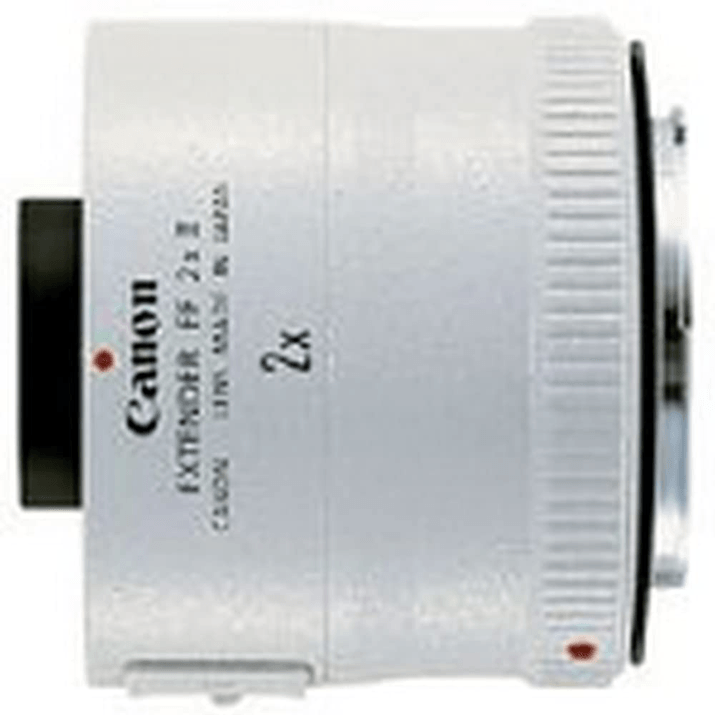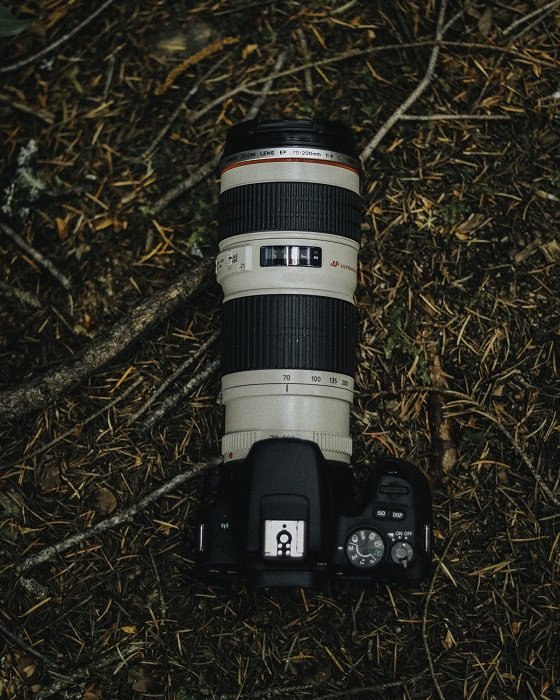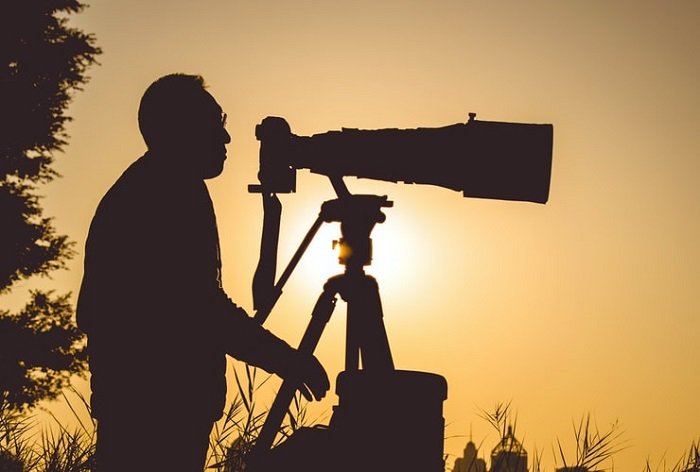Distance is a difficult problem to solve in photography. You could be using the biggest and best telephoto lens, but you still can get as close as you need. That’s where the teleconverter comes into play.
Sometimes you just can’t get close enough. But teleconverters can help you get that extra bit of length you need, ensuring you get shot you want.
If you’re in need of a focal length boost, then you’re in the right place. We’ll help you get to grips with teleconverters. We’ll explain what they are and give you their advantages and disadvantages.

What is a Teleconverter?
A teleconverter is a camera accessory that extends the focal length of the lens you’re using. They are often called extenders or multipliers. That’s because they extend or multiply the range of the camera lens you’re using.
A teleconverter is a lens extension It sits sandwiched between your camera and the lens. You attach the teleconverter directly to the camera body. And then, you connect your lens to the teleconverter.
A teleconverter increases the distance between the focal point and the camera’s sensor. This increases the focal length, giving your lens a longer reach. Teleconverters also narrow the field of view, giving you a tightly cropped image.
You’ll find teleconverters with different levels of focal length multiplication. Canon and Nikon both have teleconverters with 1.4x and 2x levels of magnification. Nikon has a third model in the middle, with 1.7x magnification.
They extend the focal length of the lens by the level of magnification. If you use a 1.4x teleconverter with a 300mm prime lens, the focal length increases to 420mm. And a 70-200mm zoom lens becomes a 98-280mm.

Why Use a Teleconverter?
As mentioned, distance can be a problem in photography. Perhaps you can’t get close enough to your subject because of geographical restraints. Or maybe you don’t want to move close because your subject might be scared away.
The teleconverter serves to solve this problem. By extending the focal length of a lens, it gives you a longer range. It gives you that extra bit of length so you can get the shot you want.
Teleconverters are a popular piece of equipment with wildlife photographers. They allow them to capture intimate animal photos without treading on their toes. And sports photographers use them when they can’t get close enough to the action.
Astrophotography is another area in which teleconverters are popular. Their subjects are millions of lightyears away, so they need all the help they can get.
Also, the crop factor of a teleconverter can also help frame your subject. It’ll keep the shot tight on you so you don’t need to crop anything in post-production.

How to Use a Teleconverter?
Using a teleconverter is simple. You attach it to the camera body in much the same way you would attach a standard lens. The lens then attaches onto the teleconverter as it would to a camera.
Like extender tubes for macro photography, you can stack teleconverters to extend the focal length further. Using one 2x teleconverter makes a 200mm lens a 400mm lens. If you use two 2x teleconverters, you’ll have a 1200mm lens.
Using more than two is possible, but it’s not recommended. Problems of using teleconverters are amplified. Both image quality and optical quality can suffer.
But before you invest in a teleconverter for your camera, make sure the lenses are compatible. Even if you have a Nikon teleconverter, not all Nikon lenses have teleconverter compatibility.

Advantages of a Teleconverter
Focal Length
The main reason for the existence of teleconverters is to extend a lens’s focal length. And this is something they do very well, especially the Nikon and Canon brand options.
They are one piece of gear that can redefine the possibilities of your photography. They put you in range of the distant and far away. They make impossible shots possible.
The cropped images can also be a benefit, saving you time during the editing process.
Reduced Costs
A teleconverter is cheaper than a telephoto lens. And a telephoto lens with a teleconverter is cheaper than a super-telephoto lens. You can go from 200mm to 400mm at a fraction of the cost.
The Canon EF 400mm F5.6 USM will set you back a lot of money. In contrast, a Canon teleconverter, like the EF 2X II Extender Telephoto Accessory, can give you the extra 200mm for more than half the price.
Plus, you can also use your teleconverter with any compatible lenses you may have. It can be a versatile and cost-saving piece of your kit.

Less Weight
A teleconverter is much lighter than a super-telephoto lens. The Canon EF 400mm F5.6 USM weighs 6.17kg. You’re going to feel that when you’re out shooting. And the heavier your camera, the more camera shake you might experience.
Also, the teleconverter turns your telephoto into a super-telephoto. But you don’t have the extra weight to carry around!
Minimum Focus Distance
When you use a teleconverter, you keep your lens’s shortest focus distance. That means you don’t lose the ability to photograph closer objects when one is attached to your camera.
The minimum focusing distance of a 200mm lens is 1.1m, while the minimum focus of a 400mm is 34m. When you use a teleconverter with a 200mm, you get a focal length of 400mm and a minimum focusing distance of 1.1m.

The Disadvantages of a Teleconverter
Image Quality
While a teleconverter can give you that extra focal length, it’s not all smooth sailing. The image quality is affected in a negative way when you’re using one.
Distortion and chromatic aberration can be problems with telephoto photography. And if your lens is prone to these effects, using a teleconverter can make them worse.
The aberrations are often found near the edge of the frame, so the teleconverter crop factor can help. Or you can remove the features in post-production.
Not all pictures taken using a teleconverter will have signs of distortion, especially if you’re using a high-quality lens. But you need to be careful. And if you stack them, you multiply the risk of inferior image quality.
Change in Aperture
When you use a teleconverter, you lose your widest aperture. It increases the distance the light has to travel before hitting the sensor, so your lens loses its aperture range.
When you use a 1.4x teleconverter, you lose one aperture stop of the wider end of the scale. If you’re using a 2x teleconverter, you’ll lose two stops.
This means using a teleconverter can cause trouble in low-light conditions. If you are low on natural light, you’ll have to compensate with a higher ISO and a slower shutter speed. And this can reduce the quality of your photos.
The reduced aperture range also limits your options for effects like depth of field. And with some cameras, the reduced light means the camera’s autofocus system won’t work.
Motion Blur
As the camera’s focal length grows, it becomes more sensitive to movement. Many telephoto and super-telephoto lenses have image stabilization systems to counteract camera movement. But teleconverters don’t have this technology.
If you’re not using a tripod, the lens will be sensitive to the slightest suggestion of camera shake. This can cause motion blur in your images.

Conclusion
Teleconverters can be useful pieces of photography equipment. Their benefits are apparent in sports and wildlife photography. Yet they’re not the holy grail of telephoto photography. There are some issues you have to work with.
While they give you that extra focal length, there’s a higher risk of distortion. Plus, they’re not as efficient in low-light conditions or with camera shake. So use a tripod when you can.
But if you have a compatible lens, teleconverters can be a great option for photographers on a budget. While they have some problems, they can help you get closer to your subject without breaking the bank!
Try out our Wonderful Wildlife e-book to take stunning photos of animals in the wild!

